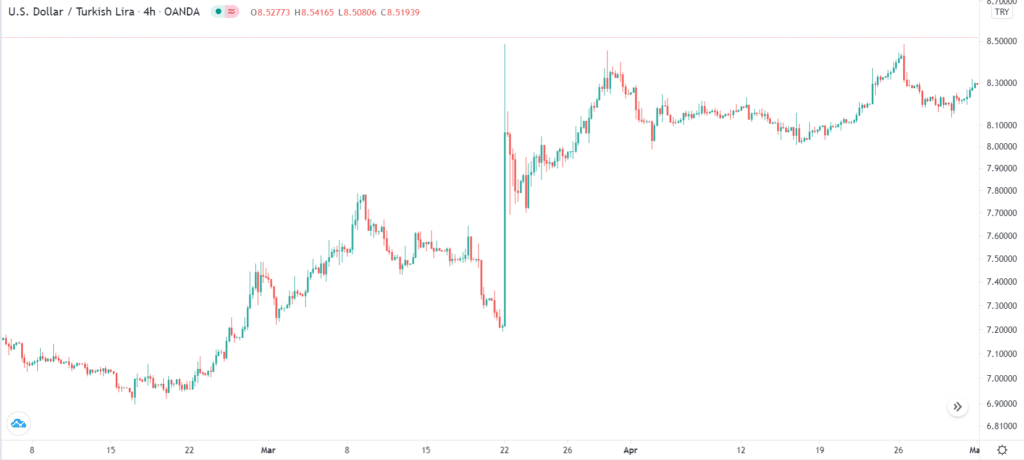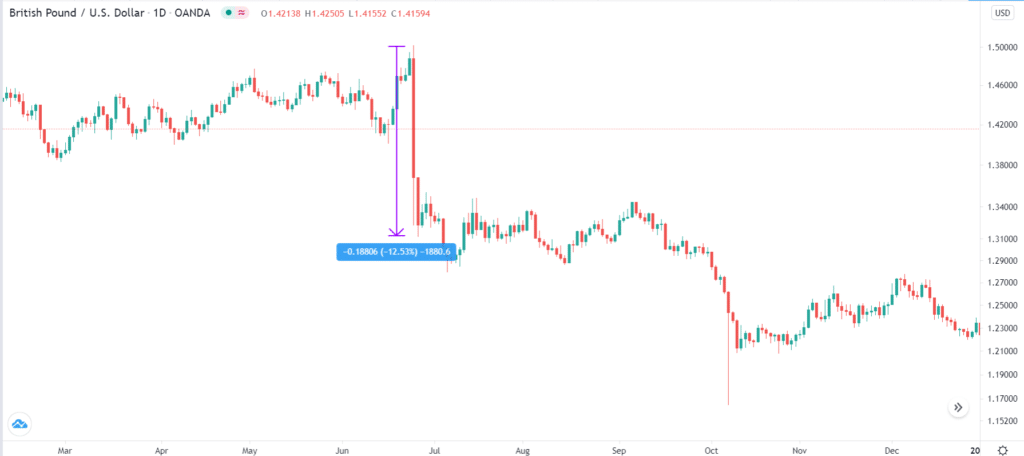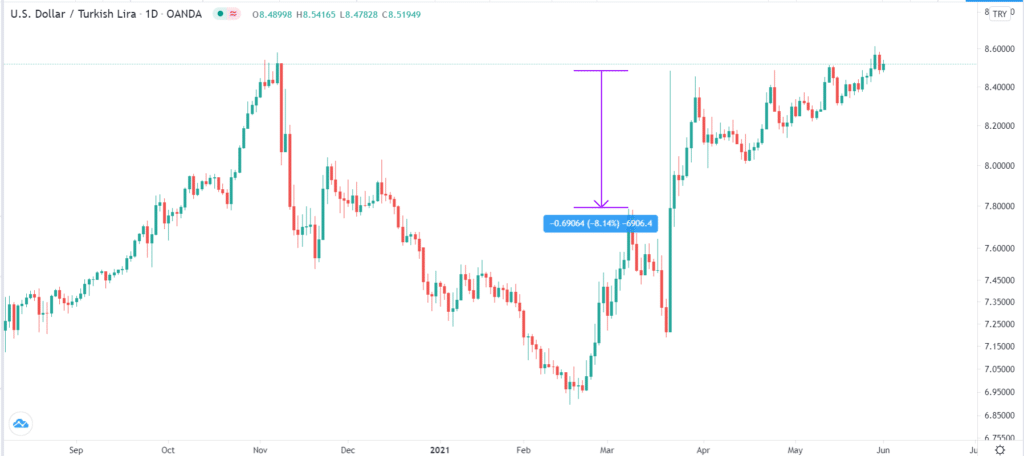A parabolic move in forex refers to a situation where a currency suddenly moves up or down within a single or several trading sessions. For example, as shown below, on March 22, the USD/TRY pair jumped by more than 18% after the Turkish president replaced the central bank’ governor.
USD/TRY parabolic move

In this article, we will look at some of the several ways to trade these parabolic moves and some of the risk management strategies to follow.
What are parabolic moves?
In most cases, currency pairs tend to experience moves that are less than 1% in a single session. A parabolic move is a situation where the currency suddenly moves sharply higher or lower within single or several sessions.
Parabolic moves happen mostly due to major events that affect a certain currency. These moves are common in all asset classes, including commodities and stocks.
Causes of parabolic moves in forex
There are several causes of parabolic moves in the forex market. Below are some of the most common causes.
Central Bank decision
Central Banks are some of the most influential entities in the forex market. Furthermore, in most countries, they have the independent role of printing cash or limiting the supply. The bank also has the mandate to set interest rates and even launch policies like quantitative easing and yield curve control.
In the past few years, central bank actions have been relatively muted because most of them have embraced the concept of the forward guidance. This is where they provide the market with hints about what they will do in the future.
Still, some of their actions tend to lead to strong moves in the market. A good example is what happened in January 2015 when the Swiss National Bank (SNB) removed the peg that existed between the Swiss franc and the euro.
EUR/CHF after SNB unpegged the franc

As shown above, the EUR/CHF dropped by almost 20% when the market opened.
Political events
Politics have an important role in the financial market. At times, some political events lead to major parabolic moves in the market. For example, the US dollar made a parabolic move after Donald Trump became president.
GBP/USD parabolic move after Brexit vote

Also, as shown above, the GBP/USD pair declined by more than 10% after the surprise vote by the leave side during the Brexit referendum.
Geopolitical events
At times, parabolic events in forex happen after a major geopolitical event. In most cases, the US dollar tends to jump when there are major negative geopolitical events like wars, threats of wars, and trade wars. Most investors tend to rush to safety because of the role of the United States as the most powerful country in the world.
Economic data
At times, better or worse-than-expected economic numbers could lead to major moves in the forex market. Some of the most common numbers that cause these parabolic moves are employment, inflation, and retail sales.
How to day trade parabolic moves
Unless you have a position in a currency pair, you will often miss the initial price action when a parabolic move happens. That is because these moves tend to happen so quickly. Others happen when the market opens on Monday.
For example, the action on the USD/TRY mentioned above happened when the markets opened on Monday since the president replaced the central bank governor during the weekend.
Below are two main strategies of trading parabolic moves in forex.
Pending orders
You can use pending orders when you expect a certain event to cause such parabolic moves.
A pending order simply directs the broker to open a buy or sell order when a certain level is reached. For example, assume that the USD/CHF pair is trading at 1.1020 before the Federal Reserve interest rate decision. In this case, no one really knows where the pair will move to or if it will have a major move.
In this case, you can place a buy-stop order at 1.1050 and a sell-stop order at 1.0950. The respective stop-loss and take-profit orders should accompany these orders. In this case, if there is a parabolic jump, the buy-stop trade will be initiated.
On the other hand, if there is a major bearish move, the sell-stop trade will be initiated. If there is no parabolic move, no trade will be opened.
Wait for the move to calm down
A common mistake that many people make when a parabolic move happens is to try and jump in. For example, if the pair is surging, they will rush and buy, and vice versa. In most cases, doing this tends to lead to significant losses.
For one, buying or selling when the parabolic move is in progress is costly since brokers usually adjust their spread. For example, traders who rushed to buy the USD/TRY at 8.4873 made a loss since the pair ended the day 8.15% lower.left
USD/TRY parabolic moves

One of the best strategies to use is to wait for the situation to calm down and then make an informed decision. For example, you could wait for the formation of a bullish flag or pennant, which are signs that the move will continue.
At times, in case of a major bearish move, the currency pair will go through a relief rally. This is a situation where the price rises after a major decline. In most cases, the relief rally is accompanied by another decline. You can take advantage to enter another bearish trade.
Summary
Parabolic moves are common occurrences in the currencies, stocks, and cryptocurrency market. At times, when you are lucky, the events could lead to substantial profits.
However, at times, these moves could lead to substantial losses. For example, the parabolic moves that happened when the SNB unpegged the Swiss franc led to the bankruptcy of several brokers and traders.
Therefore, even when the moves have not happened yet, we recommend that you always protect your trades using a stop-loss.







